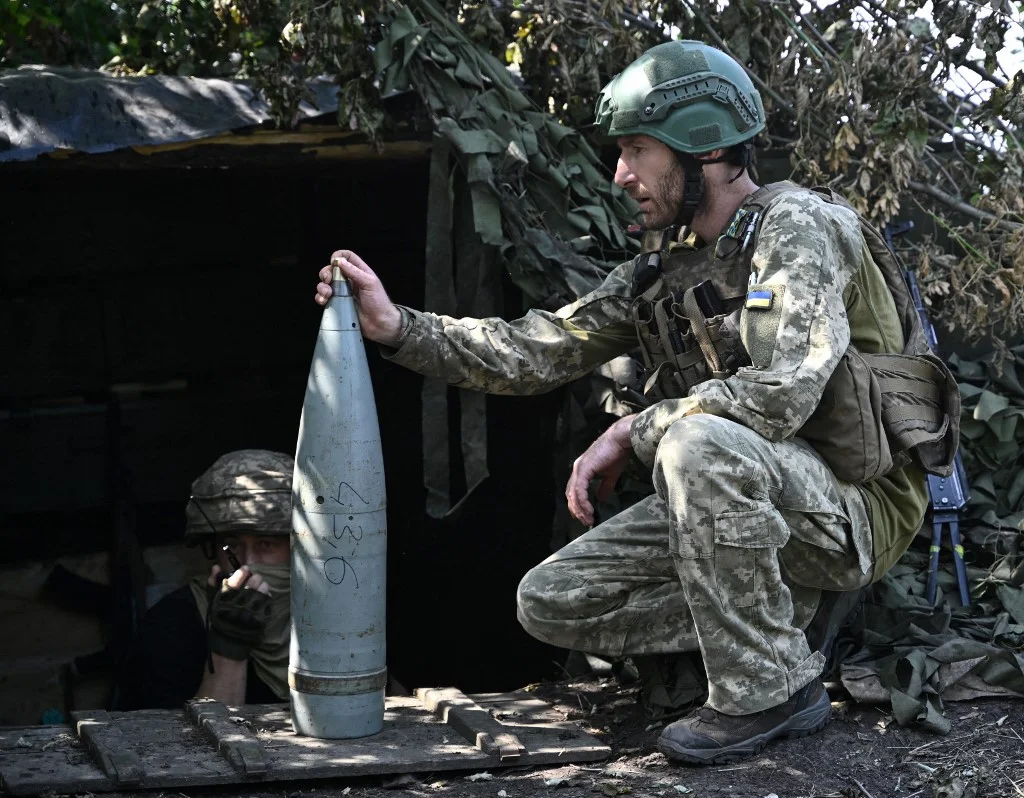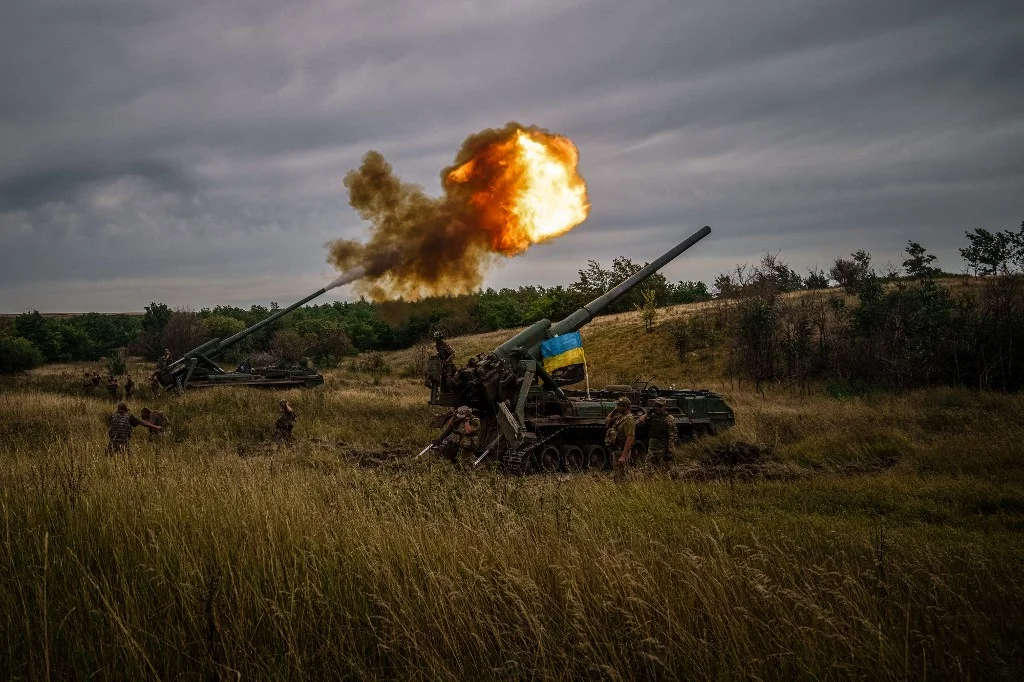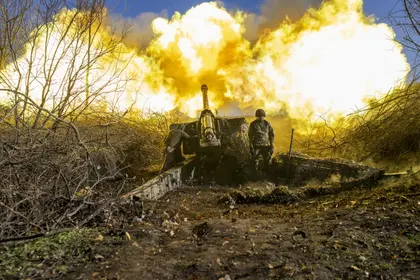Ukrainian gunners operating technically-superior cannon have gained a powerful battlefield advantage and are inexorably reducing the Russian army’s mortars, howitzers, and rocket artillery systems to scrap with something approaching impunity, Russian military bloggers are saying.
Russian “war correspondent” Vladimir Rogov, a Moscow-supported journalist in lockstep with the Kremlin since its Feb. 24 invasion of Ukraine, in a Sept. 6 essay explaining the Russian army’s recent loss of the tactically-important southern front village of Robotyne explained to readers that Moscow’s troops fought hard, but the unpleasant truth is the Russian army – at least at the moment – has no counter to a Ukrainian military armed with superior artillery.
- Find the most current war in ukraine update in the Kyiv Post’s daily news reports published today.
- View the most recent Ukraine news pieces that came out today.
"The main problem is the counter-battery fight. Here, the enemy has a better position, his equipment is more modern and long-range, which directly affects the intensity of shelling (both sides are capable of) in a battle…The situation is difficult.”
Military commentator Aleksandr Khodakovsky, an outspoken supporter of Russia’s invasion of Ukraine, in Sept. 7 comments on recent successful Ukrainian counterattacks in another southern sector near the town Velyka Novosilka, said Kyiv’s troops were preceding assaults with devastating bombardments fired from outside the range of Russian artillery which is left unable to answer.

Zelensky Meets CIA Director William Burns in Ukraine
“On the part of the enemy, there is very dense artillery fire – ours respond, but the range does not allow us to reach the enemy's firing positions.
“The enemy suffers losses in manpower and equipment, but stubbornly continues to roll. Some of our positions were dismantled by shells to the point that they completely lost their functionality.”
The Armed Forces of Ukraine (AFU) started its war against Russia armed with legacy-era Soviet-designed artillery older, shorter-ranged, and less numerous than similar weapons fielded by the Kremlin.
Russia’s military leadership tried during the first 4-6 months of the war to leverage those advantages into heavy Ukrainian losses in equipment and men, but failed to defeat an AFU willing to accept heavy casualties, particularly in infantry, in order to slow the Russian advance.
The worst Ukrainian losses facing near-overwhelming Russian artillery firepower were in summer 2022 during the battles of Severodonetsk and Lysychansk, in Ukraine’s eastern Donbas region.
Ukrainian Brigadier General Serhiy Bogdanov in an Aug. 31 interview with Ukrainska Radio declared that disadvantage effectively gone, saying AFU artillery had “reached parity” with its Russian counterpart in the counter-battery battle, thanks to better equipment and tactics.

Ukrainian artillerymen prepare 152 mm projectiles for artillery at a position on the front line near Bakhmut, eastern Ukraine, on July 20. PHOTO: AFP
Soviet-era cannon operated by the Russian military have an operational range of 24-28 km., while NATO-standard guns fielded by the UAF fire effectively at ranges of 30-40 km.
“This has made it possible for us to destroy or damage the enemy's guns, and also to push the enemy's artillery away from the front line into the depth and prevent them from engaging in counter-battery fighting against our artillery and affecting our infantry," Bogdanov said.
Even vociferously pro-Kremlin observers are confirming the battlefield firepower pendulum has swung away from the Russian army clearly to the AFU’s side, and the Ukrainian artillery’s ability to hit its Russian opposite without risking being hit back, is being singled out as the key factor in AFU ground advances in recent weeks.
Russia’s Defense Ministry needs to up its game and deliver Moscow’s troops better weapons, some said: “The enemy's (AFU’s) ground assaults are preceded by strikes by his artillery, followed by continuous fire from grenade launchers and flamethrowers, and even closer continuous fire from small arms, the so-called ‘accompanying’ attack.
“There is one antidote: effective counter-battery tactics…However, in the rear area, ‘on the sideline bench’ people are just talking about it.
The only thing one can say (Russia’s Defense Minister) has been observed in factories that produce (long-range) rocket artillery for the counter-battery battle. One can only hope this will get to the front.”

Ukrainian artillery unit fires with with a 2S7-Pion, a self-propelled gun, at a position near a frontline in Kharkiv region in August of last year. PHOTO: AFP
The Russian military information platform ‘Voenniy Osvedomitel' in a Sept. 4 messaging piece argued the Russian artillery tech disadvantage was so great, that the only possible solution would be repurposing a legacy 203mm cannon operated by Red and then the Russian army, and designed to bombard stationary fortifications from a long distance, to shoot it out with modern 155mm self-propelled howitzers sent Ukraine by NATO states.
Voenniy Osvedomitel' wrote: “They (Russian artillery units equipped with the 203mm gun) will have to carry out counter-battery fighting in future because all along the front at present, to put it mildly, the situation is awful.
“Because of the absolute failure (of Russian factories) to produce a replacement system, (capable of taking on NATO artillery) our forces will use an alternative: 203mm guns taken out of mothballs.”
AFU drone operators consider Russian 203mm cannon, a prime and relatively easy target because of the weapons huge blast signature every time it fires off a shell, a tank-heavy 46-ton weight putting it at risk of becoming bogged down, and highly explosive and even less maneuverable support trucks loaded down with giant shells weighing 103 kg. each.
Ukraine’s 40th Artillery Brigade in July published video of an engagement during which the unit said a NATO-standard 155mm howitzer supported by drones tracked and then wrecked a Russian 203mm cannon.
#Ukraine: The Ukrainian 40th Artillery Brigade claims the destruction of a Russian 203mm 2S7 Pion SPG in #Kharkiv Oblast after being tracked down by UA drones- said to be hit by fire from M777 howitzers. pic.twitter.com/xS74lrGeSI
— 🇺🇦 Ukraine Weapons Tracker (@UAWeapons) July 9, 2022
Margo Grosberg, head of Estonian military intelligence, in Sept. 1 comments made in Tallinn reported by the UNIAN news agency, said: “The very good work of the Ukrainian artillery is also noted. The hunt for Russian counter-battery radars has been particularly effective.
“Thanks to this, the Russian artillery was pushed further from the front line and poorly supported its troops at the front.”
According to Ukrainian official sources, Russian artillery losses have accelerated dramatically over the summer.
According to the most recent Armed Forces of Ukraine (AFU) count, since the start of the war Ukrainian forces claimed destruction by all means of 5,685 Russian tube artillery systems and 748 rocket artillery systems.
You can also highlight the text and press Ctrl + Enter






